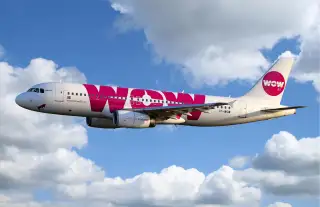5 Ways That Traveling on the Cheap Has Changed—for the Better

Since I wrote the first edition of my book How to Travel the World on $50 a Day, a lot has changed in travel. There are new ways to find cheap flights, accommodation, tours, and save money. So despite all of the developments that give travelers' headaches and bigger bills, many of the latest innovations and changes actually make it easier to travel on a budget, which is great news for cash-strapped would-be explorers. Here are the five ways travel has changed – for the better – in the last year:
1. The Swift Rise of the Sharing Economy. The sharing economy is the name for when people use an asset or their time to make extra money. Idle assets suddenly become cash cows. This has empowered individuals to enter the travel space and lets travelers to bypass the typical (and expensive) hotel/taxi/tour operator. Websites like Airbnb (accommodation), EatWith (food), and Vayable (tour guides) have made it easier to find cheaper travel alternatives (up to 70% off) and connect with locals to get a more unique, off the beaten path experience.
While many websites have existed for years, what has changed is the year size of these websites (Airbnb had 550,000 listings in 2013, a number that rose to over 1 million in 2014 while Vayable has grown to over 600 destinations), as well as the entrance of so many new players such as BlaBlaCar, Kangaride, Colunching, Camp in My Garden, Relay Rides, Flight Car, and Guided by a Local. 2014 saw a sharp increase in sharing economy players, as well as the average person's comfort using such services, and the trend will surely continue into the new year.
2. New Search Apps. New phone and tablet apps have increased over the last year that allow travelers to find flight and hotel deals, often at the last minute. App stores are awash in free tools like HotelsTonight (cheap hotels), LoungeBuddy (airline lounges), Air Help (flight compensation), and TPG to Go (managing points and miles), which travelers can use to travel cheaper, better, and smarter. HotelsTonight, though founded in 2011, expanded to four continents and began allowing reservations up to seven days in advance. The others above were all new in 2014—and an indication there are always more tools from the web that are going to be available on your phone.
3. International Budget Airlines. New international low-fare airlines options have made it easier to fly around the world on a budget. Aer Lingus now serves the U.S.'s West Coast, Norwegian Air serves both coasts with great connections to Europe and Asia, and WOW from Iceland is going to start flights with cheap connections to Europe in early 2015. While traditional airlines are raising prices (flights to Europe can be roughly $1,000 on traditional carriers), Norwegian Air has been known to offer $299 one-way tickets from Los Angeles to London and $200 one-way tickets from Oslo to Bangkok. And WOW introduced fares as low as $100 from the U.S. to Iceland.
4. Easier Ways to Get Points and Miles. As airlines and hotels have increasingly seen their loyalty programs as assets and cash machines, they have made it easier to compile points and miles, which can be redeemed for free flights and hotel rooms (this is what helps keep me on the road so long!). There are now high sign-up bonuses on branded credit cards (50,000 points is common compared to the past, when 25,000- or 30,000-point bonuses were standard), increased promotions and contests (get 1,000 points for liking our Facebook page!), and dining and shopping programs (you can regularly earn 10 points per dollar spent when you shop online) that give you multiple points per dollar spent. You can now travel and spend even less without hurting your ability to earn tens of thousands of points per year! (Mind you, this strategy works only if you always pay off your credit card bill in full.)
It’s true that 2014 wasn’t a banner year for loyalty programs as redemptions got harder and elite benefits were cut. While the programs themselves are now stingier in giving out rewards, the travel companies continue to provide other ways to make piling up points a whole lot easier.
5. An Explosion of Information. Probably the biggest, most helpful change in travel is that information that was once obscure – tiny destinations in small countries, train schedules, bus times, ferry routes, or small guest houses in out of the way destinations – is now easily found online. The last year has just seen an explosion of destination specific and planning websites. From Rome2Rio, which puts together travel routes using multiple forms of transport, to Busbud, which gives information on bus routes in developing countries, to airfare deal websites like The Flight Deal, it’s never been easier for travelers to feel like insiders and find the tips and details they need in an instant.
Granted, some changes in travel have been bad for the non-rich. The big one is that, overall airfares have been rising, even as fuel costs shrink for airlines. Nonetheless, the future is bright for those looking for more creative ways to see the world on a budget. Technology and the Internet have decentralized travel in a way that lets consumers bypass traditional agents, brokers, and global travel companies and find new and better ways to find deals and have more local and authentic experiences.
Matt Kepnes runs the award-winning budget travel website Nomadic Matt and is the author of the new book, How to Travel the World on $50 a Day, available January 6 in bookstores and online. His tips and expertise have appeared in Wall Street Journal, CNN, National Geographic, BBC, The Guardian, and The New York Times.